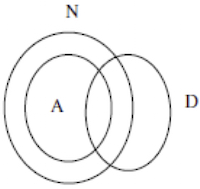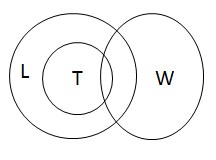Answer: Option A.
‘very large risk associated’ is written as ‘nu ta ro gi’-(1)
‘risk is very low’ is written as ‘ gi se nu mi-----(2)
‘is that also associated’ is written as ‘ta mi po fu’----(3)
‘inherent risk also damaging’ is written as ‘fu nu di yu’---(4)
From statements 1 and 3, we have ‘associated’ as the common word and the common code is ‘ta’
From statements 3 and 4, we have ‘also’ as the common word and the common code is ‘fu’
From statements 2 and 4, we have ‘risk’ as the common word and the common code is ‘nu’
From statements 2 and 3, we have ‘is’ as the common word and the common code is ‘mi’
From statements 1 and 2, we can conclude that the code of ‘very’ is ‘gi’
Therefore, from statement 1, the code of ‘large’ will be ‘ro’
Similarly, from statement 2, the code of ‘low’ is ‘se’ and from statement 3, the code of ‘that’ is ‘po’
| Word |
Code |
| very |
gi |
| risk |
nu |
| is |
mi |
| also |
fu |
| low |
se |
| large |
ro |
| that |
po |
| associated |
ta |
| inherient |
di/yu |
| damaging |
di/yu |
‘di’ can either be ‘damaging’ or ‘inherent’. Hence option A.


